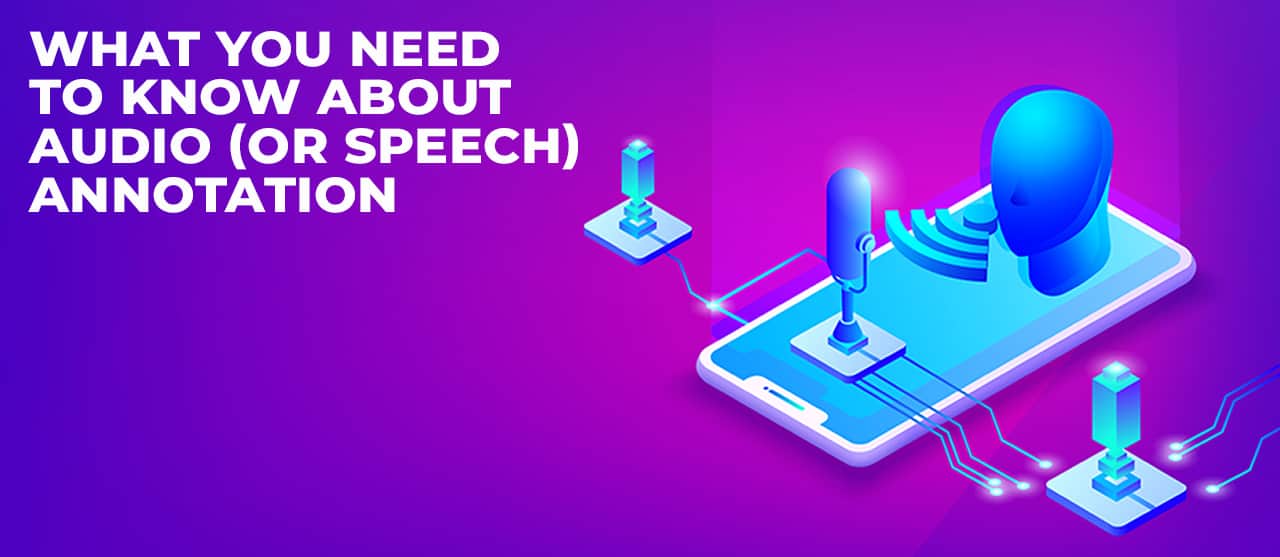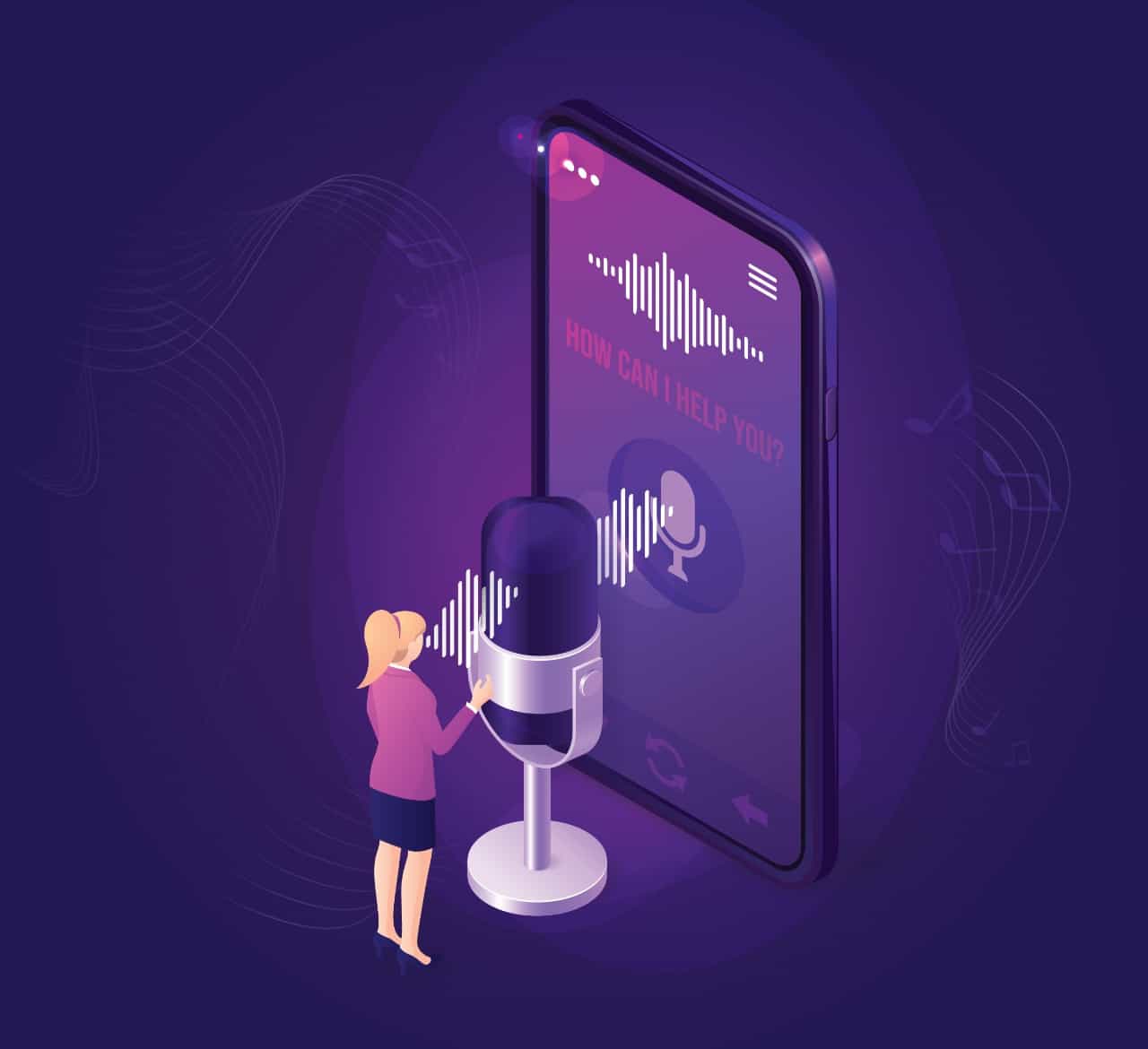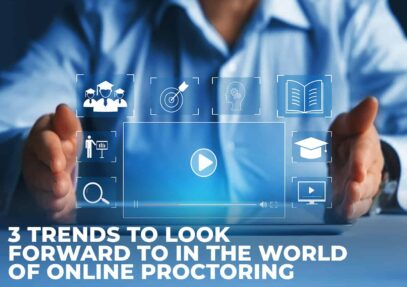
Be it for on-road GPS navigation or voice-assisted speakers, speech-activated devices are gaining more prominence in today’s digital world. Globally, the market for speech and voice recognition is estimated to be valued at $1.38 billion (in 2021) and is projected to grow to $3.89 billion by 2026. So, how do machines recognize spoken language or sounds? Through audio or speech annotation. A subset of data labeling or annotation, audio annotation can be performed on different types of voices and is an integral part of natural language processing (NLP).
With more companies deploying NLP, the global NLP market was over $12 billion in 2020 and is projected to grow at an annual rate of 25% to $43 billion by 2025. How are businesses using audio annotation? With the right tagging, audio annotation (or labeling) is being used to develop intelligent chatbots, virtual assistants, customer call audit systems, and real-time translation.
What Is Audio Or Speech Annotation?
For any system to understand human speech or voice, it requires the use of artificial intelligence (AI), and more specifically in many cases, machine learning. Machine learning models that are developed to react to human speech or voice commands need to be trained to recognize specific speech patterns. The large volume of audio or speech data required to train such systems needs to go through an annotation or labeling process first, rather than being ingested in a raw audio file.
Effectively, audio or speech annotation is the technique that enables machines to understand spoken words, human emotions, sentiments, and intentions. Just like other types of annotations for image and video, audio annotation requires manual human effort where data labeling experts can tag or label specific parts of audio or speech clips being used for machine learning.
One common misconception is that audio annotations are simply audio transcriptions, which are the result of converting spoken words into written words. Audio annotation goes beyond audio transcription, adding labeling to each relevant element of the audio clips being transcribed.
When it comes to creating audio annotations, there are different types of techniques that can be used. We’ll explore six types of audio annotation below.
Six Types Of Audio Annotation
Here are six main types (or techniques) that are used to annotate audio or speech:
1) Speech-To-Text Transcription:
Speech to Text transcription is an integral part of any NLP process. This technique involves transcribing recorded audio (or speech) into text while labeling selected words (or sounds) in the audio file. Additionally, proper punctuation is an important part of speech-to-text transcription.
2) Sound (or Speech) Labeling:
In this type of annotation, the annotators are provided with a recorded audio file. This annotation technique involves segregating various sounds within the audio clip and labeling them accurately. Typical sounds include musical tones, spoken keywords, or even background sounds. This technique is an important part of training AI models used for chatbots and virtual assistants.
3) Event Tracking:
Event tracking is one annotation technique that is used in situations we are likely to face in everyday life. Event tracking is used to label sounds occurring in a multi-source scenario with overlapping sounds (for example, a busy city street) or those heard remotely (for example, the sound of a jet plane flying above). This annotation technique provides little (or no) control over overlapping events, which can present challenges in testing or training audio data.
4) Audio Classification:
This technique of audio annotation is effective in distinguishing a voice from a sound. Audio classification is critical for developing intelligent chatbots or voice assistants, where AI models need to decipher human voices from other passing sounds. In addition to virtual assistants, the audio classification technique supports many use cases like automatic speech recognition and text-to-speech services.
5) Natural Language Utterance:
This is another audio labeling technique used for creating advanced or intelligent chatbots. Natural language utterance is all about annotating human speech with a focus on minute details including the dialect, semantics, tone, and contextual aspects.
6) Music Classification:
As the name suggests, the music classification technique is used to label various music genres, musical instruments, and types of music ensembles. This technique is useful when developing AI models used for organizing music libraries and recommendations for music lovers.
Next, we’ll take a look at how organizations should annotate audio files. Should they outsource the task or perform it in-house?
How To Annotate Audio Data
To perform audio annotation, organizations can use software currently available in the market. Free and open-source annotation tools exist that can be customized for your business needs. Alternatively, you can opt for paid annotation tools that have a range of features to support different types of annotation.
Such paid annotation tools are generally supported by a team of professionals, who can configure the tool for your purpose. Another option would be to develop your own customized annotation tool within your organization. However, this can be slow and expensive and requires you to have an in-house team of annotation experts.
Companies that do not want to spend their resources on in-house annotation, can opt to outsource their work to an external service provider specializing in the annotation. Outsourcing may be the best choice for your organization, because service providers:
- Have a team of available data experts who are skilled in the time-intensive tasks of data cleaning and preparation that are required prior to data annotation
- Can often start immediately executing the type of labeling that your business needs
- Deliver high-quality data for your machine learning models and requirements
- Accelerate the scaling (and ROI) of your resource-intensive annotation initiatives
Conclusion
With natural language processing (NLP) becoming more mainstream across business enterprises, the need for high-quality audio annotation services is being realized by organizations looking to build efficient machine-learning data models. Rather than developing in-house expertise, companies are finding that they are better served by outsourcing their annotation work to qualified third-party experts.
EnFuse Solutions has extensive experience providing a variety of data annotation, cleansing, and enrichment services to its global clients. Feel free to check out this blog that talks about when the time is right to partner with a data labeling company. Want to know how data labeling could benefit your business? Please contact us anytime.
Leave a Reply
Your email address will not be published. Required fields are marked *


















Comment